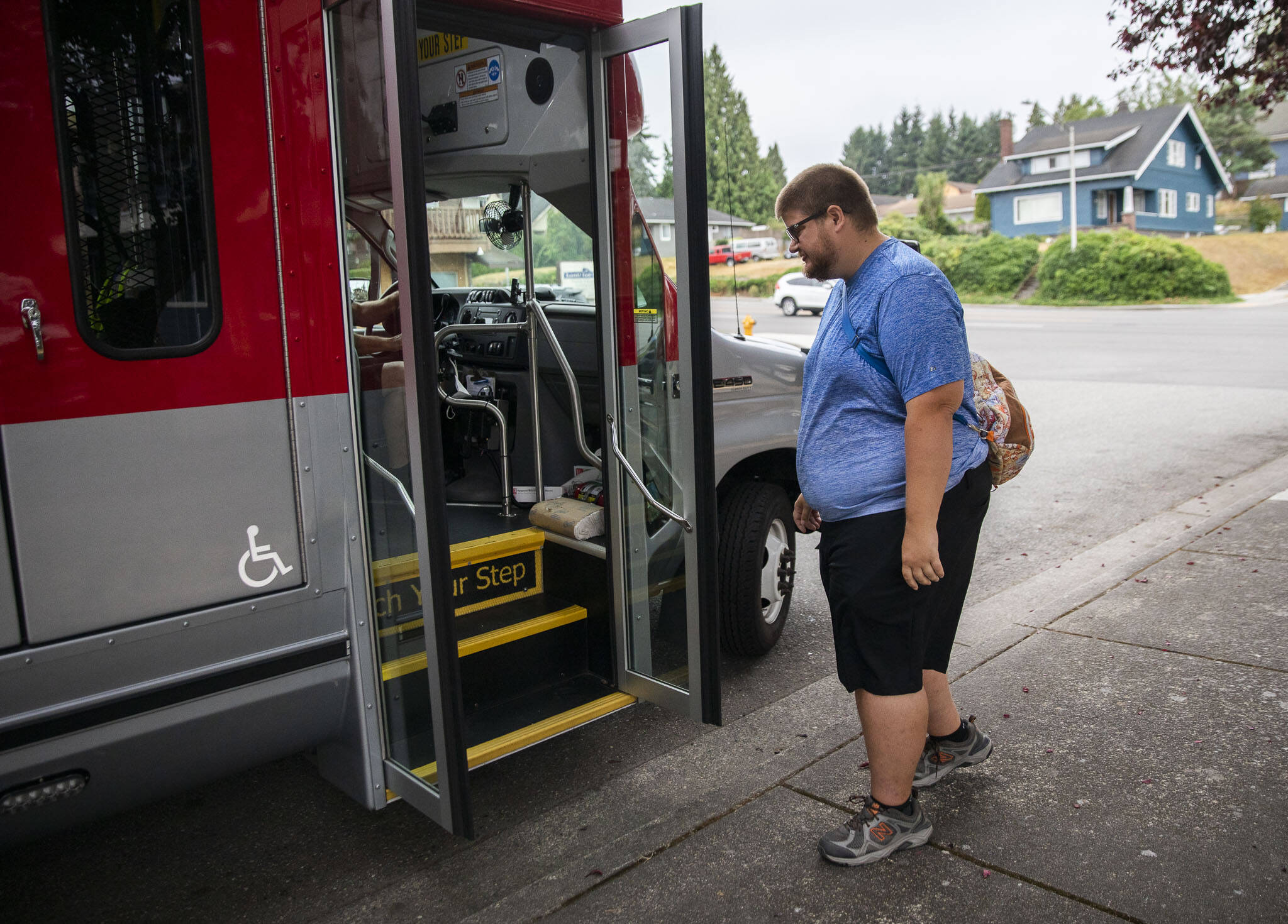Doug Wennerberg likes bowling at Evergreen Lanes.
It’s a chance to socialize and be active. But getting there can be a challenge because he doesn’t drive.
Even with buses running on nearby Evergreen Way, getting there and back is tricky if the 30-year-old with autism is out late.
He often relies on family and friends for rides, and takes paratransit. But relying on paratransit is time-consuming for things like grocery shopping because he has to schedule the rides a day ahead. Even if he’s just shopping for a few minutes, he might have to wait an hour or longer for the trip to his Everett home.
“Just to run two errands, it takes all day,” Wennerberg said.
Wennerberg and others with mobility challenges are asking city and county officials to take part in Disability Mobility Initiative’s Week Without Driving this year Sept. 19 to 25. Gov. Jay Inslee issued a proclamation that encourages people to join.
The event gained attention last year as the group, which is part of Disability Rights Washington, asked state officials to participate. That was before the Legislature’s work on the Move Ahead Washington transportation package passed this year. The $17 billion revenue and spending plan included millions for projects to help people get around by bus, rolling and walking.
About 100 people took part officially, though its reach went beyond those who signed up on the website, Disability Mobility Initiative director Anna Zivarts said.
“I was sort of overwhelmed by the response we got to the challenge last year,” Zivarts said. “I think it really resonated with a lot of people.”
With the legislative win, the group wanted to focus this year’s Week Without Driving on local government and transit agencies. They want city, county and public transportation leaders to see what the system is like for those who don’t drive — about 250,000 residents of age, according to Federal Highway Administration data — in Washington.
Eventually, the initiative and its fellow disability mobility advocates want completed sidewalks, frequent and reliable transit, and safe crossings. Those things are the difference between leaving home or not for people with disabilities, Zivarts said.
“Having people experience that first-hand, I think there’s nothing comparable,” Zivarts said. “There’s definitely an increased awareness that there are non-drivers out there, and not an insignificant population. That’s shocking to people, even in the transportation space.”
The challenge’s rules are the same as last year. Participants can get a ride from someone, roll, stroll and take a bus — anything except driving themselves.
Erin Murray, a Mountlake Terrace City Council member, is doing the challenge again this year. Her work with the Seattle Chamber of Commerce means she can stay home some days.
When she leaves the house, her primary transportation option is driving. Part of it is her children’s schedules at different schools and in sports. But it’s also the system, she said.
“Like so many others, that is often the default,” Murray said. “That’s how our society is set up and structured.”
Mountlake Terrace is bracing for change, and in many ways already seeing it, as light rail is set to arrive in 2024. It could help more people get out of their cars, but getting to the light rail station at the Mountlake Terrace Transit Center without packing the parking garage is a key goal for city and transit leaders.
But that’s still years away, and people like Leigh Spruce have transportation needs now. Spruce, 53, lives in Mill Creek. She often uses paratransit to get around, but it has limits for some of her needs, including late-night service when she wants to see performances in Seattle.
“It’s not as readily impulsive as we’d like it to be,” Spruce said.
Kylie Walsh is an advisor with People First of Snohomish County, a group that advocates for people with disabilities. The most common concern she hears from the group’s members and advocates is the need for transportation improvements that reduce the amount of time it takes to get somewhere.
“All I hear, over and over again is length of time, especially between counties. … It adds hours to their trip,” Walsh said.
Whitney Stohr, leadership and independent living manager for Arc of Snohomish County, doesn’t rely on public transportation. But Stohr is working to ensure equity, dignity and independence for her child who has a developmental disability. Making transportation less time-consuming and simpler can help achieve those goals.
“That’s a major issue that impacts every other part of life,” Stohr said. “The ability to move within your community should not be a considerable challenge.”
Have a question? Call 425-339-3037 or email streetsmarts@heraldnet.com. Please include your first and last name and city of residence.
Talk to us
> Give us your news tips.
> Send us a letter to the editor.
> More Herald contact information.

























